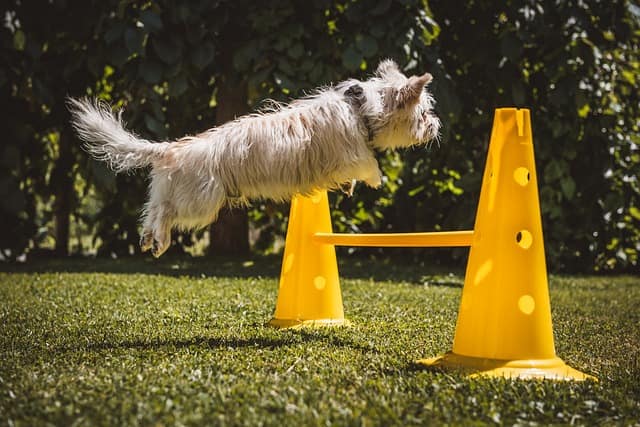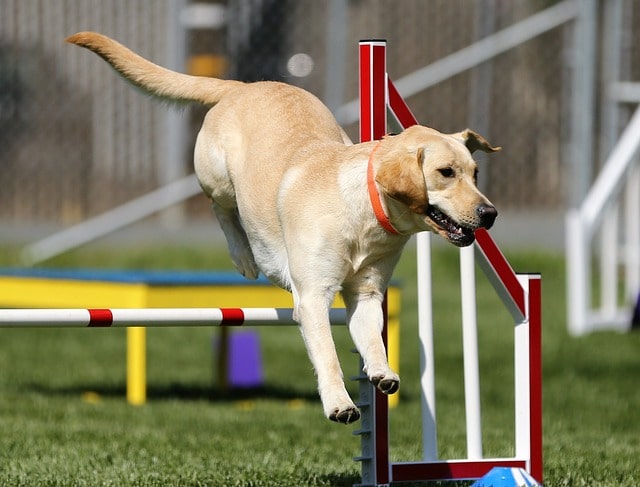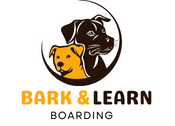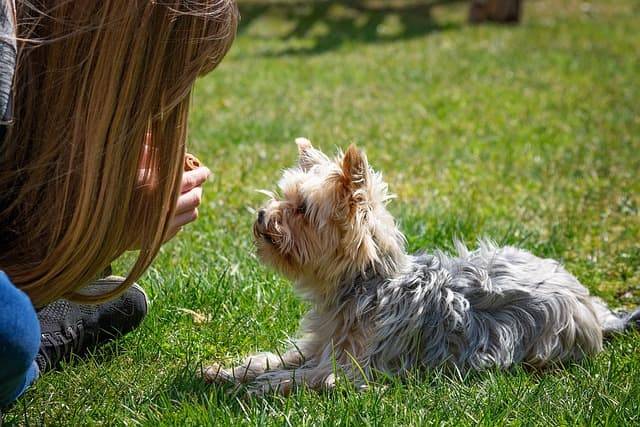Imagine your dog’s personal space as a bubble—a distinct boundary that defines their comfort zone. Anything unwanted in this space can trigger a swear reaction. Here is where Bubble Theory Dog training comes into play.
In the revolutionary dog training world where traditional methods meet innovative techniques, bubble theory dog training is another game changer. This training method is an innovative approach that revolutionizes the way we interact with our furry companions.
This article will explore the fascinating bubble theory concept and its application in canine behavior modification. Whether you’re a seasoned dog trainer or a novice enthusiast, embracing this novel approach can transform your furry friend’s obedience and overall well-being.
Understanding Bubble Theory Dog Training:

Before diving into the practical aspects, let’s first understand the essence of bubble theory in dog training.
At its core, bubble theory revolves around personal space or “bubble” – an invisible boundary surrounding your dog, defining their comfort zone.
Just as humans have personal space preferences, dogs have boundaries that dictate how they interact with the world.
We can establish a solid practical training and communication foundation by respecting and understanding these boundaries.
Learn more about Bubble Theory Training.
Critical Principles of Bubble Theory Dog Training:
Here are some principles of bubble theory dog training.
1. Respect for Boundaries:
Central to bubble theory is respecting your dog’s personal space. Like humans value their personal space, dogs have their comfort zones.
Recognizing and respecting these boundaries is crucial to fostering a positive training environment. Understand their comfort levels and avoid actions or stimuli that encroach upon their bubble without permission.
2. Gradual Exposure:
Gradually introducing new stimuli or training exercises is essential in bubble theory. Besides this, Rushing your dog into unfamiliar or overwhelming situations can lead to stress, anxiety, and even aggression. Instead, take small steps, allowing your dog to acclimate at their own pace.
3. Positive Reinforcement:
Positive reinforcement lies at the heart of bubble theory dog training. Encourage desired behaviors with rewards such as treats, praise, or playtime.
Positive reinforcement strengthens the bond between you and your dog while motivating them to repeat the desired actions.
4. Clear Communication:
Effective communication is critical to successful training. Dogs thrive on clear, concise communication. Use cues, body language, and vocal commands to convey your expectations effectively and ensure mutual understanding.
5. Patience and Consistency:
Rome was built a day ago, and neither is a well-trained dog. Be patient, consistent, and understanding throughout training, reinforcing lessons regularly. Consistency in communication helps establish understanding and trust.
Benefits of Bubble Theory Dog Training:
Here are some benefits of Bubble theory dog training:
1. Improved Communication:

You establish a strong foundation for mutual understanding and trust by respecting your dog’s boundaries and communicating effectively.
2. Reduced Stress and Anxiety:
Based on bubble theory, training minimizes stress and anxiety in dogs by allowing them to acclimate gradually to new experiences and ultimately fosters confidence and resilience.
3. Enhanced Bonding:
Positive reinforcement and clear communication strengthen the bond between you and your dog, creating a harmonious relationship built on trust and mutual respect.
4. Sustainable Results:
Last, unlike punitive methods that may yield temporary compliance, bubble theory dog training focuses on long-term behavioral change rooted in positive reinforcement and respect for your dog’s needs.
Implementing Bubble Theory in Dog Training:
Here is a step-by-step explanation of how you can implement bubble theory:
1. Understanding Your Dog’s Bubble:
First, observe your dog’s body language and behavior to identify their comfort zone or “bubble.” Note signs of stress, anxiety, or discomfort, such as cowering, panting, or avoidance behaviors.
Respect your dog’s bubble by avoiding sudden movements or intrusions that may cause distress.
2. Building Trust:
Secondly, build trust. Trust forms the cornerstone of any successful training relationship. Spend quality time with your dog in a calm and relaxed environment. Engage in bonding activities such as gentle petting, playing, and grooming, and observe their body language to gauge their comfort level.
4. Identifying Triggers:
Every dog has specific triggers that can cause stress or anxiety. Identifying these triggers allows you to tailor your training approach accordingly, whether it’s loud noises, unfamiliar people, or other dogs,
5. Gradual Exposure to Stimuli:
Then, introduce new stimuli or experiences to your dog in a controlled and gradual manner.
Start with less intimidating stimuli and gradually increase exposure over time. Monitor your dog’s reactions closely and adjust the intensity or duration of exposure as needed.
6. Gradual Desensitization:
Once you’ve identified triggers, initiate desensitization exercises to help your dog overcome fear or anxiety. Start with minimal exposure and gradually increase intensity or proximity, rewarding calm behavior.
7. Positive Reinforcement:
Reward your dog for displaying desired behaviors within their comfort zone. Use treats, praise, or toys to reinforce positive actions such as sitting calmly or approaching unfamiliar objects.
Consistently reinforce good behavior to encourage repetition and learning. Break down the trigger into smaller, manageable steps and expose your dog to each step at a pace they can handle.
6. Focus on Communication:
Use clear, consistent cues and commands to communicate your expectations to your dog. Pay attention to your body language and tone of voice, as dogs are highly attuned to non-verbal cues.
Be patient and avoid frustration; dogs respond best to calm and assertive leadership.
7. Addressing aggression:
Lastly, seek professional guidance from a certified dog trainer or behaviorist if your dog displays aggressive behaviors. Avoid punishment-based methods, as they can escalate aggression and erode trust.
Implement behavior modification techniques designed to address the underlying causes of aggression, such as fear or territoriality.
Success Stories and Testimonials:
Here are some testimonials and success stories that could highlight the effectiveness of bubble theory dog training:
1. Testimonial from an Owner of a Fearful Dog:
“I was at my wit’s end trying to help my dog, Max, overcome his fear of strangers. Traditional training methods only seemed to make things worse. That’s when I discovered bubble theory dog training. With patience and guidance, we gradually exposed Max to new people in a safe and controlled environment, allowing him to build confidence at his own pace. I’m thrilled that Max is much more relaxed around strangers, and our walks are enjoyable again!”
2. Success Story: Overcoming Separation Anxiety:

Our rescue dog, Luna, struggled with severe separation anxiety, making it impossible for us to leave her alone without her becoming distressed. We turned to bubble theory training as a last resort. Through gradual desensitization and positive reinforcement techniques, Luna learned to feel secure and alone for short periods. It’s been a journey, but we’re amazed at their progress. Thanks to bubble theory, Luna can now stay home alone without experiencing anxiety.
These testimonials and success stories illustrate the positive impact of bubble theory dog training on dogs with various behavioral challenges, highlighting its effectiveness in promoting confidence, reducing anxiety, and improving behavior.
Incorporating bubble theory into your dog training approach can yield transformative results, enriching your relationship with your furry companion and fostering a harmonious living environment.
By embracing principles such as respect for boundaries, gradual exposure, positive reinforcement, and clear communication, you can unlock your dog’s full learning potential while nurturing a deep sense of trust and understanding.
So, leap into the world of bubble theory dog training and embark on a journey of mutual growth and companionship with your beloved canine friend.
Frequently Asked Questions (FAQs) for Bubble Theory Dog Training:
1. What is bubble theory dog training?
Bubble theory dog is a methodology that involves exposing dogs to various stimuli and experiences in a controlled environment, allowing them to explore and engage with these stimuli at their own pace before moving on to new ones. It emphasizes creating a safe and positive learning environment for dogs to build confidence and develop desired behaviors.
2. How does bubble theory differ from traditional dog training methods?
Unlike traditional training methods that may rely on punishment or coercion to modify behavior, bubble theory focuses on positive reinforcement and allowing dogs to learn through exploration and discovery. It prioritizes the dog’s emotional well-being and natural learning processes.
3. What are the fundamental principles of bubble theory dog training?
Some fundamental principles include gradual exposure to stimuli, reinforcement of desired behaviors, avoidance of punishment or aversive techniques, creating a safe and supportive learning environment, and allowing dogs to learn at their own pace.
4. Is bubble theory suitable for all types of dogs?
Bubble theory can be adapted to suit dogs of various breeds, ages, and temperaments. However, it may be particularly beneficial for dogs that are shy, fearful, or easily stressed, as it provides them with opportunities to build confidence and overcome anxieties in a controlled manner.
5. How do I implement bubble theory dog training with my dog?
Implementing bubble theory involves carefully managing your dog’s environment to gradually introduce them to different stimuli or situations, rewarding positive behaviors, and allowing them to explore and acclimate at their own pace. Consistency, patience, and positive reinforcement are key.
6. Can bubble theory dog training be used to address specific behavior problems?
Yes, bubble theory training can be practical for addressing various behavior issues, such as fearfulness, anxiety, aggression, or excessive barking. By creating a positive and supportive learning environment, dogs can learn alternative behaviors and coping mechanisms.
7. How long does it take to see bubble theory dog training results?
The timeline for seeing results can vary depending on the dog’s temperament, previous experiences, and the complexity of the behaviors being addressed. Some dogs may show improvement relatively quickly, while others require more time and patience.
8. Are there any risks associated with bubble theory in dog training?
When implemented correctly, bubble theory training is generally considered low-risk, as it focuses on positive reinforcement and avoids aversive techniques that could potentially harm the dog’s emotional well-being. However, monitoring your dog’s reactions and adjusting the training approach is essential to ensure their comfort and safety.
9. Where can I find training resources or guidance?
Books, online courses, and professional trainers specialize in positive reinforcement and bubble theory dog training. Moreover, it is essential to seek out reputable sources and tailor the training approach to suit your dog’s needs and circumstances.

